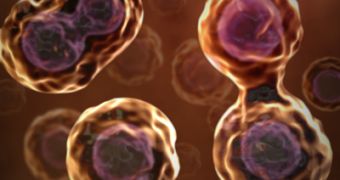Researchers working with the Brigham and Women's Hospital and the Harvard Stem Cell Institute claim to have figured out a way to turn run-of-the-mill stem cells into so-called drug delivery vehicles.
What's more, they claim to have successfully used such re-purposed human stem cells to treat inflammation in laboratory mice.
Writing in a recent issue of the journal Blood, the scientists detail that, as part of their research project, they toyed with the makeup of several connective tissue stem cells.
Specifically, they introduced modified strands of messenger RNA inside them.
The result was that the cells started to produce both adhesive surface proteins and an anti-inflammatory molecule, Science News reports.
When the stem cells were injected into the bloodstream of laboratory mice and reached sites of inflammation, the adhesive proteins allowed them to stick to this swollen area.
The anti-inflammatory molecule, on the other hand, enabled the stem cells to reduce this localized swelling, the same source details.
Commenting on this series of experiments, research leader Jeffrey Karp explained that, “If you think of a cell as a drug factory, what we're doing is targeting cell-based, drug factories to damaged or diseased tissues, where the cells can produce drugs at high enough levels to have a therapeutic effect.”
By the looks of it, the scientists chose to use connective tissue stem cells due to the fact that, unlike other biological agents, they do not cause the immune system to attack them.
“This opens the door to thinking of messenger RNA transfection of cell populations as next generation therapeutics in the clinic, as they get around some of the delivery challenges that have been encountered with biological agents,” co-lead author Oren Levy said.
Presently, the only downside is that the modified stem cells die shortly after having been introduced into the bloodstream. Scientists are working on sorting out this issue and hope that, in time, they will be able to considerably extend the cells' lifespan.

 14 DAY TRIAL //
14 DAY TRIAL //